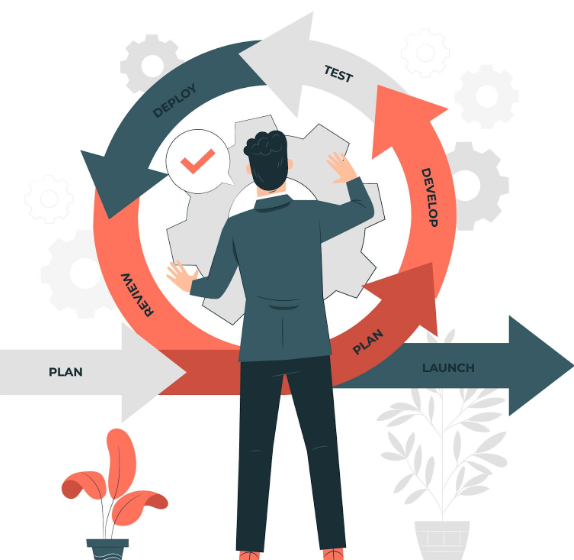As a startup, managing recruitment can feel like you’re building a plane while flying it. You need talented people fast, but the manual tasks of sorting resumes, scheduling interviews, and following up on feedback consume valuable time. One founder we know spent 30 hours last month just arranging interview slots, and another lost three qualified candidates due to a chaotic spreadsheet system. These aren’t just minor mistakes—they are the consequences of trying to scale manually. The solution isn’t to work harder but to work smarter using recruitment automation, which can help you handle the repetitive tasks and free you up to focus on what truly matters: finding the right people.
In this guide, we’ll cover:
- Where automation has the biggest impact (and where it doesn’t)
- Simple tools you can implement without needing an HR department
- How to keep your hiring process personal while moving faster
- Practical first steps you can take this week
Why Traditional Hiring Methods Don’t Work for Startups
Picture this: You post a job opening for your engineering team, and within days, you have 200 applicants. Now, you’re spending your evenings:
- Scanning resumes for keywords
- Playing calendar Tetris with interview schedules
- Chasing down team members for feedback
- Realizing your top candidate took another offer while you were waiting for approvals
This tedious process is not only frustrating—it’s expensive. The longer a role stays open, the more productivity is lost, and your already stretched-thin team is put under more pressure. Worse still, the best candidates often move on within 10 days, while most startups take over three weeks to hire.
How Recruitment Automation Can Transform Hiring
Forget the idea of robots rejecting candidates. Smart recruitment automation is more like having an efficient assistant who can:
- Screen resumes for essential qualifications (like specific skills)
- Schedule interviews based on real-time availability
- Remind interviewers to provide timely feedback
- Keep candidates informed, preventing them from feeling ghosted
Take the example of a 12-person SaaS company struggling with an influx of sales applicants. After implementing three simple automations, they saw:
- Their application-to-interview time drop from 14 days to just 3
- Hiring managers reclaim 8 hours a week that were previously spent scheduling interviews
- Candidate satisfaction scores doubled due to improved communication
And all of this was achieved without losing the personal touch that defines their company culture.
Where Automation Makes a Difference
- Resume Screening That Actually Works
Instead of spending hours skimming through hundreds of resumes, automation tools can:
- Highlight applicants who meet your non-negotiable criteria
- Surface interesting candidates you might have otherwise missed
- Learn from past hiring decisions to refine the screening process
Pro tip: Always combine automated screening with a manual review to catch brilliant but unconventional candidates.
- Interview Scheduling Without the Hassle
Scheduling interviews traditionally can involve back-and-forth emails that take up precious time. Automated scheduling tools eliminate this issue by:
- Showing only available times when all interviewers are free
- Sending automated reminders and prep materials
- Adjusting the schedule quickly if emergencies arise
- Structured Feedback That’s Useful
No more vague feedback like “seemed nice.” Automated systems can:
- Send standardized evaluation forms right after interviews
- Flag discrepancies in feedback, such as differing opinions from interviewers
- Consolidate all feedback in one place, speeding up decision-making
- Candidate Nurturing at Scale
Automated yet personalized messaging can:
- Acknowledge applications immediately
- Provide candidates with realistic timelines and updates
- Keep warm leads engaged for future job openings
Getting Started Without Overwhelming Your Team
Phase 1: Identify Your Biggest Bottleneck
Pick one area where automation can make an immediate impact:
- Are qualified applicants slipping through the cracks? Implement resume filtering.
- Is your hiring process too slow? Set up an automated scheduling system.
- Is feedback inconsistent? Standardize evaluation forms.
Phase 2: Choose Scalable Tools
Look for tools that:
- Integrate with your current software (like calendars and email systems)
- Can scale as your hiring needs grow (from 5 to 50 hires per year)
- Offer free trials so you can test them before committing
Phase 3: Keep the Human Element
While automation handles the repetitive tasks, ensure that:
- Personal outreach is done by real team members
- Unstructured conversations for assessing cultural fit still happen
- Flexibility is maintained for exceptional cases
Common Pitfalls to Avoid
- Over-Automating Early-Stage Hiring
The first few hires are critical, and should involve direct involvement from the founders. Automate the administrative tasks, but stay personally engaged in the decision-making process. - Letting Tools Dictate Your Process
Tech should support your hiring philosophy, not control it. If a tool forces you to compromise on your values or approach, look for something else. - Ignoring the Candidate Experience
No one wants to feel like they’re interacting with a robot. Balance efficiency with personal touches to maintain a positive experience for candidates.
Conclusion: Recruitment Automation is Key to Startup Success
Recruitment automation isn’t about removing the human touch from hiring; it’s about eliminating the friction that slows down the process. By streamlining administrative tasks, you can:
- Move at the pace the best candidates demand
- Make data-driven decisions faster
- Reclaim hours of lost productivity for your team
The startup that gets this right not only fills roles faster but also builds stronger teams while still having time to lead them. The first step? Identify one part of your hiring process to automate this week. From there, the rest will fall into place.



